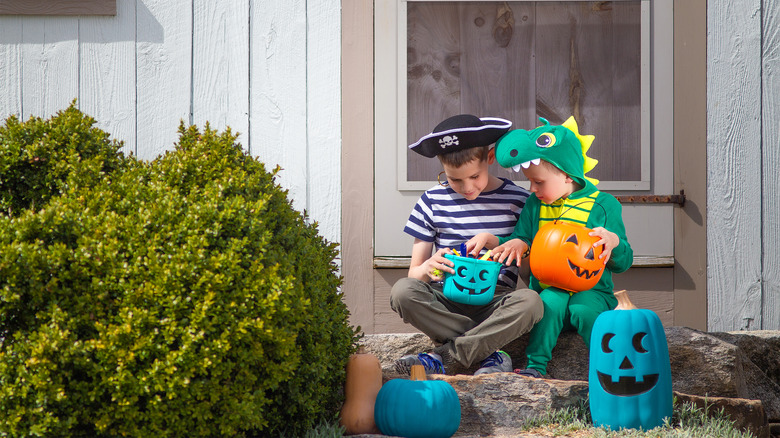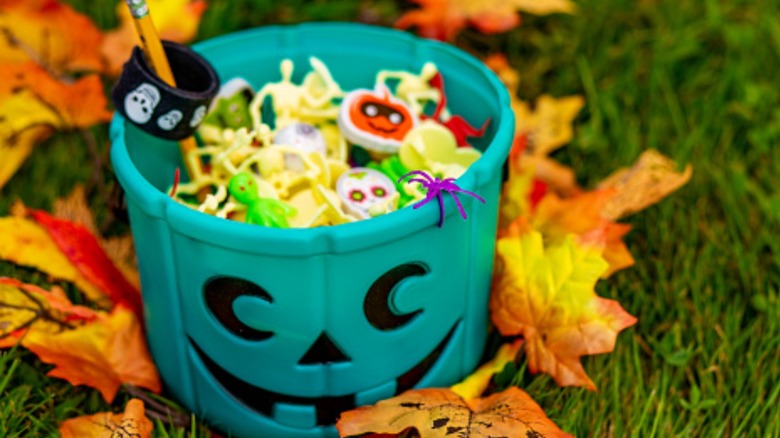What It Means To Put A Teal Pumpkin On Your Porch
Some of us are old enough to remember trick-or-treating, frolicking from house to house, untethered, free and wild, not a care in the world. Although those days are seemingly gone, we are slowly beginning to move in that direction again, and many of us love to see the various costumes and wonderful faces of innocent kids having fun. If you host trick-or-treaters this year, think about putting a teal-colored Halloween pumpkin outside your door to support children with food allergies, signifying you have alternatives for treats, such as glow sticks or toys.
There are also other colors that represent different things, like purple and blue . If you put a purple pumpkin out, this means you support those with epilepsy. A blue pumpkin means you support people on the autism spectrum. It's a wonderful way to say you care, and people appreciate it. We're going to tell you all about the Teal Pumpkin Project and how you can participate in this amazing movement that is meant to include everybody.
The Teal Pumpkin Project
The color teal is a lovely shade of blue-green, kind of turquoise. Painting your Halloween pumpkin this color and setting it out on your porch when giving out treats is something you can do to help show your support for kids with food allergies. It means you offer an alternative to candy for children who need it. Most importantly, it is also to promote the inclusion of all trick-or-treaters, regardless of any challenges they face.
The project was started by FARE (Food Allergy Research and Education), who proclaimed teal as the color for food allergy awareness on this holiday. Food allergies affect one in 13 children, so the idea is to let every child participate. Traditional Halloween candy contains multiple common ingredients that trigger allergies for many children, such as soy, nuts of all kinds, milk, eggs, and wheat. Luckily, there are plenty of different options for treats you can offer instead.
Alternative treats and how to participate
If you'd like to participate, you can still offer traditional Halloween candy for kids who don't have allergies but give trick-or-treaters a choice. If a child has food allergies, you can either have allergen-free treats on hand or small non-food items. Things like bubbles, stickers, glitter pens, anything glow-in-the-dark, vampire teeth, and spider rings are all fun ideas. You could even put the small toys into a pillowcase and let the kids reach inside without looking for a fun surprise.
If you'd like to participate, there's even a special place to go online and enter your house on a map called The Teal Pumpkin Project Map (via FARE). This will enable parents of kids who want the opportunity to participate to see which houses in their area will be joining. Halloween is a magical holiday that allows kids to be a superhero, a princess, or whatever their imagination can create for one night of the year — this is a way of bringing us all together and showing our support for inclusion.


